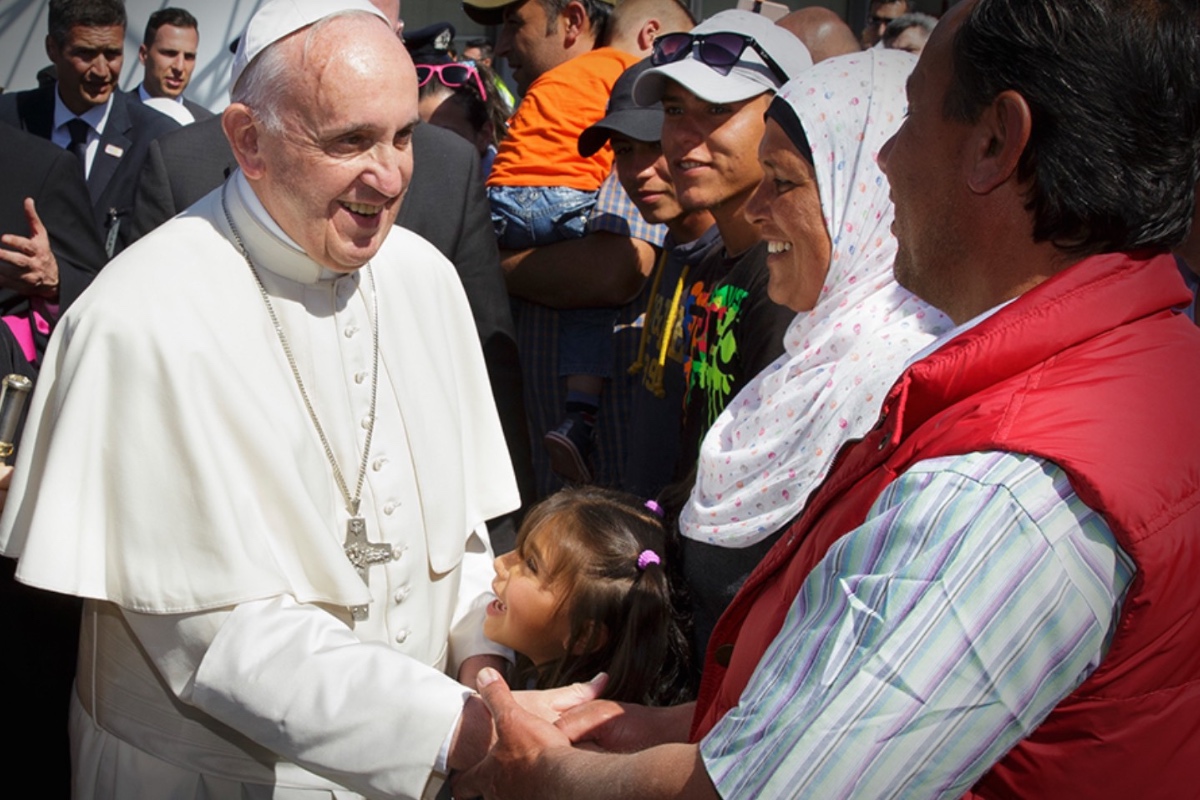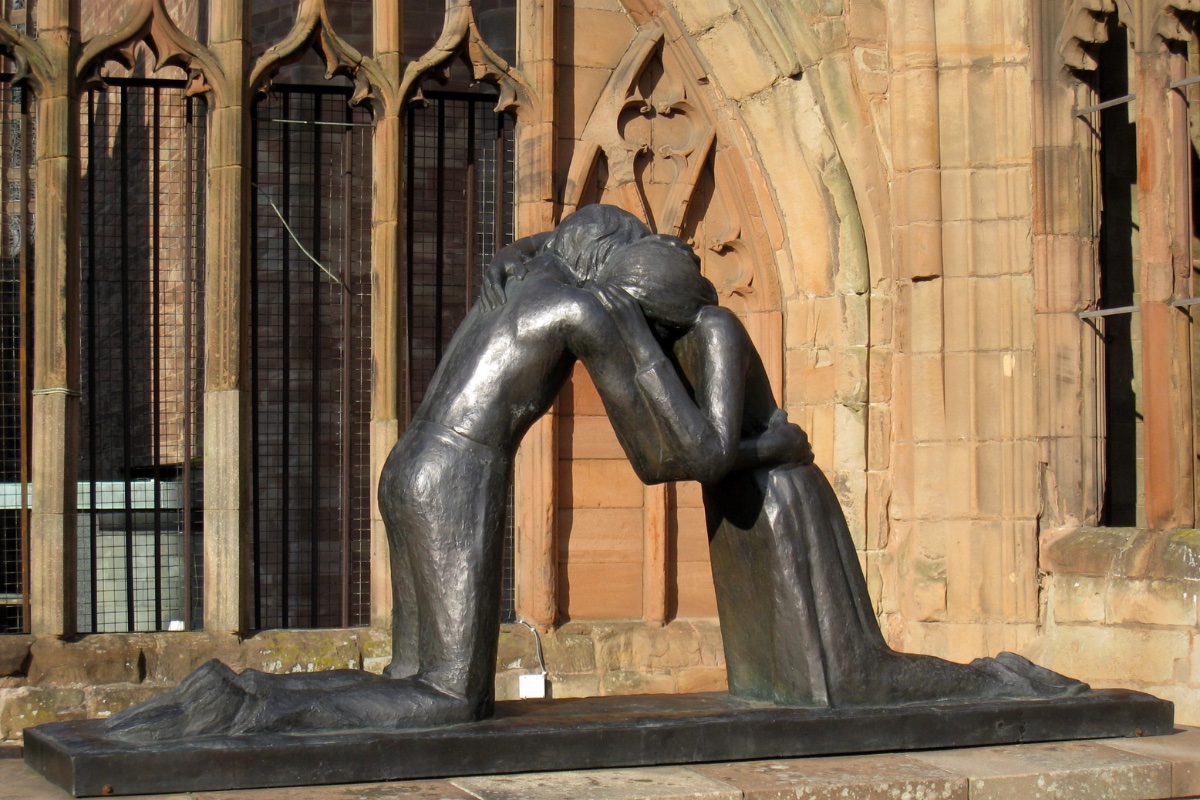Until recently, little had been written on reconciliation from a liberationist perspective, in part due to a reluctance to engage a concept that has often been co-opted by those in power to justify political amnesties that shield human rights violators at the expense of justice. Nevertheless, many of the key concerns explored in theologies of reconciliation have been central to Latin American liberation theology since its inception. In this short essay, I examine the relationship between reconciliation and liberation, focusing on two fundamental aspects of liberation theology’s methodology that shape its unique approach to reconciliation: the preferential option for the oppressed, and the centrality of reflective Christian practices.
Like reconciliation, the term liberation carries a rich meaning that is both historical and transcendent. When speaking in transcendent terms, liberation theologians tend to equate the concept of liberation with that of reconciliation, conveying God’s promise for deliverance such as redemption, salvation, or communion. When discussing how salvation unfolds within history, liberation theologians develop a more nuanced distinction between liberation and reconciliation.
Liberation theologians describe historical salvation as the integral liberation of the human person—one that encompasses the different dimensions of human existence and establishes the necessary conditions for reconciliation. This liberation unfolds on three interrelated levels: first, liberation from social structures and conditions of oppression and marginalization; second, liberation from obstacles that hinder personal fulfillment; and third, liberation from sin. These forms of oppression are the result of human rejection of God’s grace. While the third level explicitly refers to sin as that which disrupts communion with God and others, the first two illustrate how sin manifests in both social and personal dimensions. Liberation is ultimately oriented toward love. It is not an end in itself but a means to communion—we are liberatedto love.
Reconciliation, from the perspective of liberation, speaks of God’s redemptive work on behalf of the oppressed, the excluded, and the materially poor. By choosing the situation of the oppressed as the starting point for theological reflection, liberation theologians reject the idea that theology can remain neutral in the face of suffering. Instead, they affirm that the universal love of God is concretely manifested in Christ’s preferential love for the marginalized. Their partiality for the wellbeing of the oppressed is not merely an ethical stance, but grounded in what God has revealed to us: Learn to do good; seek justice, rescue the oppressed, defend theorphan, plead for the widow (Isaiah 1:17); And the king will answer them, ‘Truly I tell you, just as you did it to one of the least of these who are members of my family, you did it to me’ (Matthew 25:40).
God’s preference for the poor must be viewed within the context of God’s universal and gratuitous love. Scripture provides no indication that God’s preferential concern for the oppressed is because they are more deserving or morally superior to their oppressors. Rather, the poor are favored because they are in greater need than the non-poor.
God’s preference for the poor must be viewed within the context of God’s universal and gratuitous love....the poor are favored because they are in greater need than the non-poor.
As the oppressed become aware of their situation and the possibility of change, they take on their rightful role in the process of reconciling reality. The demands of their agency call them to choose solidarity with themselves and others who are oppressed. At the same time, the Christian nature of their mission compels them to abandon any desire for retaliation and extend forgiveness to their enemies. This is essential if the pursuit of justice and reconciliation is to be rooted in God’s gratuitous love rather than in the limited framework of just deserts. Love is manifested in the process of reconciliation, which prioritizes addressing the needs of survivors and suffering victims while remaining committed to the effort and hope of restoring the oppressor.
Drawing from both secular and religious sources, liberation theologians identify three interrelated dimensions essential to any process of reconciliation: (1) the truthful uncovering of past events and sources of conflict, along with the responsibility to honor the memories of those affected and restore the agency of victims; (2) the pursuit of justice that responds to the claims of victims and seeks to build a more just and harmonious socioeconomic and cultural order; and (3) the forgiveness necessary to restore communal life and envision a transformed future.
Inspired by God’s unconditional mercy and driven by Christ’s promise of a reconciled world, reflective Christian practice begins with the reality of oppression and moves toward solidarity with the oppressed. It seeks the transformation of the culture and social structures that perpetuate marginalization and enmity, as well as the re-creation of both the oppressed and the oppressor to facilitate their reconciliation. In conclusion, the journey from enmity and conflict to social reconciliation can be understood as a process that involves liberation from all forms of social, personal, and spiritual oppression, along with the cultivation of new ways of relating that foster communion with others and with God. In this sense, historical liberation is, at its core, the practice of reconciliation. We achieve true liberation only through reconciliation.
O. Ernesto Valiente is associate professor of systematic theology at the Clough School of Theology and Ministry at Boston College.
Photo credit/description: Oscar Leiva/Silverlight for CRS. Óscar Romero, archbishop of El Salvador, was an outspoken advocate for the poor and the marginalized, exemplifying the teachings of liberation theology. He was canonized as a saint in October 2018 by Pope Francis.
Six Meanings of Political Reconciliation
Robert J. Schreiter
In post-conflict situations, the term reconciliation is used (and misused) in a variety of different ways. Its misuse occurs most often when perpetrators call for reconciliation—reconciliation meaning that victims should forget about the harm they have suffered and give up their demands for justice. In the victims' forgetting, perpetrators are released from responsibility for their acts, and society goes on as though nothing has happened. Such actions are hardly reconciling. Similarly, the term is misused when there is a call for reconciliation while the conflict is still raging. Reconciliation in this instance means a cessation of hostilities without taking into account either the causes or the consequences of the hostilities.
Across the discourse on reconciliation today, it is possible to discern a spectrum with at least six different meanings. These six different situations, which all have gone under the name of reconciliation, serve as a reminder that reconciliation is as much a process as it is a goal.
- The two parties cease fighting and agree to live with differences. That agreement is guaranteed with the establishment of clear boundaries. The Dayton Accords, which created the three ethnic enclaves in Bosnia-Herzegovina, is an example of this.
- The two parties expand the social space and change the climate to permit working together more. Northern Ireland since the Good Friday Agreement, and especially since building a new government in 2007, is an example of this.
- The parties experience a historical realignment that marks a return to some previous state. The union of the two German states after the fall of the Berlin Wall is an example.
- The parties try to create a new, common narrative that overcomes the divisions of the past. This is the “racial reconciliation” that the United States and Australia have tried to achieve with their African American and Aboriginal populations, respectively. The Center for Democracy and Reconciliation in Southeast Europe has a project of rewriting the history books used in the schools of the successor countries of the former Yugoslavia in order to create a less conflictive and more collective narrative of the past.
- The parties create social conditions so that the violence of the past cannot be repeated. This was the definition of reconciliation that animated the Truth and Reconciliation Commission in Chile. It is also behind anti-Nazi legislation put in place in the Federal Republic of Germany after its inception in 1949.
- The parties reach a point where the past is no longer problematic for the present. This is perhaps the point that France and Germany have reached through some sixty years of conscious work at cooperation. The picture of Gerhard Schroeder and Jacques Chirac standing hand in hand at Versailles in 2003 was emblematic of this relationship. Versailles was the place where both countries had celebrated their victories over each other in the nineteenth and twentieth centuries. In the twenty-first, it became the site of complete reconciliation.
Reverend Robert J. Schreiter, C.PP.S. (1947–2021), was a priest of the Missionaries of the Precious Blood. He was professor of theology at the Catholic Theological Union in Chicago.
Originally published in Peacebuilding: Catholic Theology, Ethics, and Praxis, edited by Robert J. Schreiter, R. Scott Appleby, and Gerard F. Powers (Maryknoll, NY: Orbis Books, 2010) and reprinted with permission.






